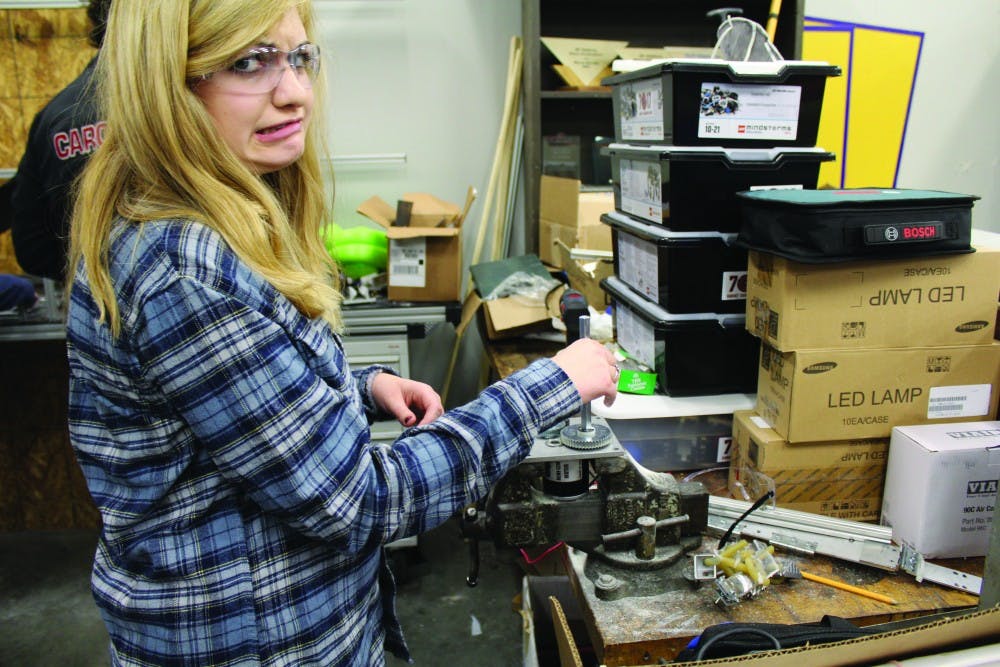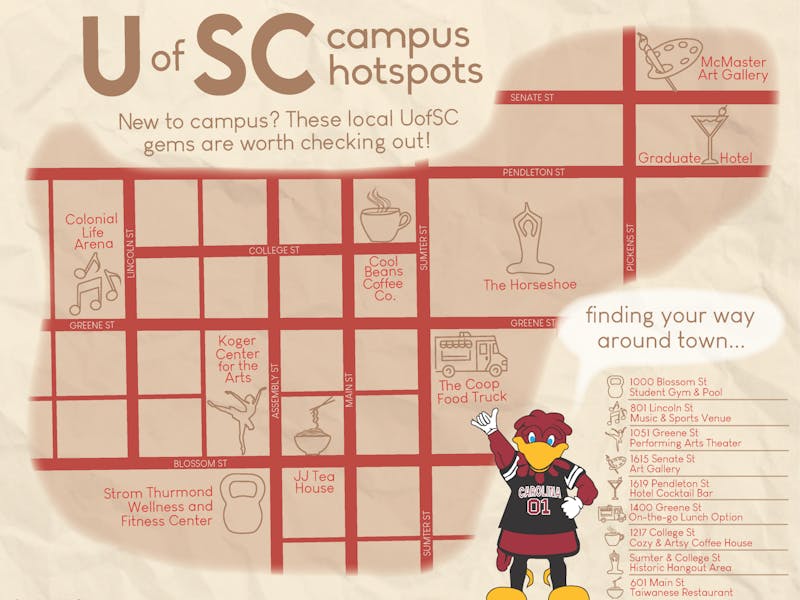The Sandstorm II is headed for competition, and I have no idea what it does.
I really tried to understand. After attending a meeting for the robotics club on a rainy Thursday night, I walked into the cramped workroom realizing I knew next to nothing about robotics.
0
Not that I ever knew anything about robotics in the first place. Real Housewives trivia? Sure. All the lyrics to every Katy Perry song? Obviously. The brand of shoes that Claire Underwood prefers? I shamefully do. But machines made of twisted metal and gears that move around plastic bins on a field? Nope, nada. I was going in blind.
As I walked into the space, I saw a handyman hoarder’s heaven: rusted seats, different-sized gears strewn over an old rowboat and shelves full of cans of oil and grease. Carefully stepping my way through, I found the group of guys for whom I was searching, and timidly sitting on a stool in the corner, I began taking notes.
The man who did most of the talking was Billfred Leverette, who graduated in 2008 and now oversees the organization with an immense passion.
“The purpose of this club is to get kids interested in science,” he said. “We make it a sport.”
Leverette doesn’t take the word “sport” lightly, as preparations for the annual competitions take place each night for weeks beforehand. He also isn’t referring to college students as “kids” – he means the middle and high school students who show up almost every night to help design and build Sandstorm II.
That’s part of what makes the robotics club so special. It isn’t about college students getting together to make their resumes more impressive; it’s about people from all ages gathering in one place to build something they can be proud of. Bragging rights follow the trophies.
I kept getting more and more curious to see the Sandstorm II in action, and after some prodding, the club said they would unveil it to me. It was wrapped in sheets of plastic, and to unwrap it, they had to document the time of its unwrapping and the audience that was viewing it for official records. Needless to say, the competitions are intensely regulated.
Once it was unwrapped, I couldn’t help but ask if it could be turned on, sounding like a high school boy seeing a girl for the first time. After searching for the right computer and cord and realizing they were nowhere to be found, the members told me I could only admire its stoic and unmoving beauty. Fine.
But then I got an itch to do something with my own hands, so John Fogarty, a third year computer engineering student, took pity on me and began disassembling something that looked like pieces of metal bolted together. Snickering, Leverette took off his clear goggles and handed them to me, presumably for safety reasons I did not want to dwell on.
Fogarty showed me how to assemble the gears back together, and with the grace of a chimpanzee being introduced to a space station console, I managed to put the mechanism back together. I have no idea what I made, but damn if I wasn’t proud of it.
These guys are going to literally build our future.
Check out what the robotics club is up to next at garnetsquadron.com or @GarnetSq.



